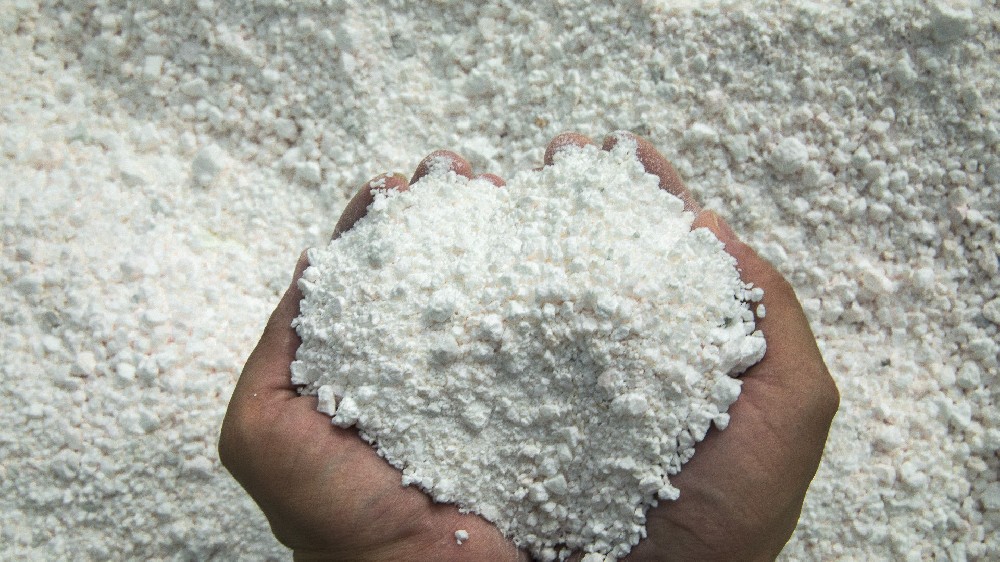A Partnership-Driven Success in 200-Mesh Limestone Production
Introduction
The true measure of an industrial equipment project's success lies not just in its technical specifications, but in the total value and competitive advantage it delivers to the client. This on-site visit to a specialty chemicals plant illustrates a partnership model where deep technical collaboration, robust equipment design, and unwavering support converged to solve a critical production challenge: establishing a reliable, high-volume supply of 200-mesh limestone powder for use as a functional filler in plastics and paints. This narrative goes beyond the machine to explore the ecosystem of success we build with our clients.
From Client Challenge to Integrated Solution

The client's initial predicament was multifaceted. Their existing milling circuit was unreliable, producing a particle size distribution that was too broad and inconsistent for their high-value customers, leading to product quality complaints. Furthermore, the machine was plagued by frequent mechanical failures and high energy costs, creating operational and financial strain.
Our proposal was not simply to sell a mill, but to deliver a complete, integrated grinding solution. After a thorough analysis of their limestone source and end-product requirements, we recommended a modernized Raymond Mill system known for its operational stability and precision. The solution included the main mill, a high-efficiency classifier, a customized feeding system, and a robust pulse-jet dust collection unit. The installation phase was a model of collaboration; our engineering team worked side-by-side with the client's technicians to oversee foundation work, power integration, and ducting layout, ensuring a flawless mechanical and electrical fit.
Commissioning was coupled with comprehensive, hands-on training for the operators and maintenance staff. We covered everything from daily startup and shutdown sequences to interpreting the PLC data for optimizing performance and executing basic troubleshooting. This knowledge transfer was pivotal, empowering the client's team to take full ownership and confidence in operating the new system.

Delivering Measurable Value and Fostering Long-Term Partnership
The value delivered became evident within the first month of operation. The plant manager reported a dramatic transformation in their product quality. The new system's precise classification produced an exceptionally tight particle size distribution, with over 99% of the output consistently between 180 and 230-mesh. This uniformity directly enhanced the performance of their plastic composites, improving mechanical properties and surface finish, which in turn strengthened their market position.
From an operational standpoint, the system's automation reduced the manual labor and skill level previously required to operate the old mill, mitigating human error. The predictable maintenance schedule, informed by the control system's operational hour tracking, allowed the plant to schedule downtime during planned maintenance windows, drastically improving production planning and supply chain reliability. The client now perceives our relationship not as a simple vendor transaction but as a strategic partnership for continuous improvement. We provide ongoing remote support, performance analysis, and a reliable supply of genuine wear parts, ensuring the long-term productivity and return on their capital investment. This site stands as a powerful example of how a partnership-focused approach creates lasting, tangible value far beyond the initial equipment purchase.
FAQ
1. Beyond the mill itself, what are key components of a "complete grinding solution"?
A complete solution is a synergistic system that includes:
Feed System: A steady and controlled feeder (e.g., vibratory or screw feeder) to ensure optimal mill loading.
Grinding Host: The main mill with appropriately sized motors and grinding assemblies.
Classifying System: The precision classifier (turbo or vertical) that defines the product fineness.
Product Collection: A cyclone and/or baghouse dust collector to efficiently separate powder from the air stream.
Control & Automation: A PLC-based control panel for monitoring, control, and data logging.
2. How does consistent 200-mesh powder quality impact the client's end-products?
Consistency is king in high-value applications. In plastics, uniformly fine particles act as better fillers, distributing stress evenly and improving impact strength and surface smoothness. In paints, consistent particle size ensures even dispersion, affecting opacity, gloss, and film integrity. A broad size distribution can lead to coarse particles that create defects, undermining product performance and client trust.
3. What does the "partnership model" entail after the sale is complete?
Our partnership model is built on ongoing support and includes:
Remote Monitoring & Support: Analyzing operational data to provide proactive recommendations.
Spare Parts Management: Ensuring timely availability of genuine wear parts to minimize downtime.
Technical Updates: Informing clients about upgrades or new operational techniques that can improve their process.
On-Demand Service: Dispatching engineers for complex maintenance or troubleshooting when requested.
4. How can a new mill improve a plant's operational planning and supply chain reliability?
Modern, reliable mills transform operational planning by introducing predictability. With known production rates, consistent quality, and a data-informed maintenance schedule, plant managers can accurately forecast production, make firm delivery commitments to their customers, and schedule maintenance during non-peak times without unplanned stoppages. This reliability is a fundamental competitive advantage in today's market.





